 |
The purpose of classifying soils in Soil Taxonomy is to
enable soil scientists to predict the behavior of one soil, for
which technical data are lacking, by examining its relationship
to similar soils that have been studied. We have looked at the morphologic
characteristics of aridic soils and seen how they classify in Soil
Taxonomy. We'll finish the program with a brief consideration
of what can be accomplished when these soils are irrigated and properly
managed.
|
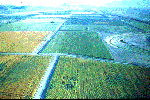 |
Availability of water is the key to the use of Aridisols for agriculture.
History is rich with references to the practice of irrigation from
wells, tanks and canals. Even today, irrigation devices are being
used which are identical to those built hundreds, and in some cases,
thousands of years ago.
|
 |
The potato harvest of this proud Pakistani farmer would not have
been possible without irrigation and sound soil management.
|
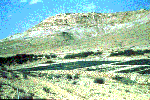 |
The most widely used method of conveying water to agricultural
fields is surface diversion. One method of surface diversion that
has been practiced for thousands of years is called water harvesting.
In this system, runoff is collected in a catchment area and channeled
to agricultural fields at the base of a slope.
|
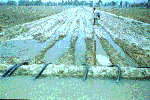 |
In this and other surface irrigation systems, water is generally
distributed within fields in furrows...
|
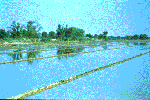 |
...or in basins.
|
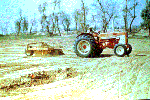 |
Surface irrigation systems require gentle slopes. In most instances,
some land leveling is needed before surface irrigation can be practiced
efficiently. Land leveling techniques vary from soil movement with
a tractor drawn scraper...
|
 |
...to the latest laser leveling systems using heavy equipment.
|
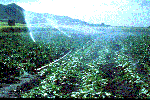 |
Another common irrigation method uses sprinklers. Sprinkler irrigation
is particularly useful on coarse textured soils or on fields that
are difficult to level. Sprinklers range in size and complexity
from this small hand-moved system...
|
 |
...to much larger, mechanized central pivot units.
|

